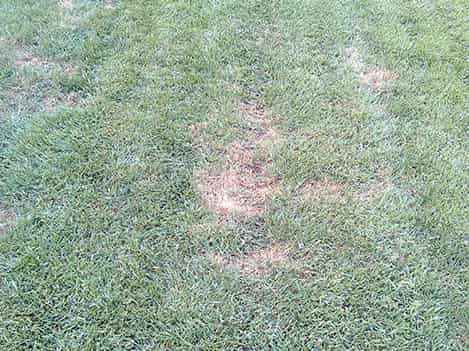Your Cart

Yellow Patch: Dealing with Lawn Disease
Mar 20, 2019
![yellow patch disease in lawn]()
How to Identify & Control Yellow Patch

Every year between late fall and early spring, yellow patch strikes on many unsuspecting lawns across the nation. If not kept in check, this unsightly disease will cause yellow or light brown patches to scatter across your formerly green lawn. If your lawn has yellow rings or yellow patches, it may be the sign of yellow patch disease of necrotic ring disease. Both are caused by fungi that live in soil, thatch and dead leaves within the lawn all year long. These fungi feed on the grass by drawing nutrients from the plant and destroying the plant cells. These diseases spread in the form of spores by wind, air, water, and foot traffic, and may re-appear from year to year if certain conditions are favorable. As a general rule, areas that have been prone to disease problems in the past will at some time, if not yearly, have the same problems again. Yellow Patch is most prevalent during the late fall, winter and early spring when temperatures are cooler. The disease can affect Kentucky bluegrass, perennial ryegrass, tall fescue, Bermuda grass and zoysia grass. It causes the turf to become patchy with the rings of patches that are yellow, light brown, or reddish-brown in color and measure 5 inches to several feet in diameter. Damage is usually superficial but thinning can occur with prolonged periods of wet weather in the late winter early spring. Yellow patch is a turf grass disease that can invade your lawn for a number of reasons. It generally occurs in areas that receive more than 10 hours of leaf wetness for several days in a row. Excess thatch is also a breeding place for fungi, providing a haven for the disease to live and attack the surrounding turf. Lastly, high nitrogen levels in the lawn can increase the likelihood of the disease. Poor mowing habits can also impact the health of your lawn. If you are using a mower with a dull blade or cutting your lawn at an extremely low height, you may be leaving grass blades more susceptible to various diseases. A well-mowed lawn will ensure that grass blades remain strong and more resilient against common lawn diseases. Detectable by patches or rings that are yellow, light brown, or reddish-brown in color, often measuring from 5 inches to several feet in diameter Yellow Patch can affect Kentucky bluegrass, perennial ryegrass, tall fescue, Bermudagrass, and zoysiagrass Areas that have been prone to disease problems in the past will likely experience annual issues with yellow patch Use a slow-release fertilizer to ensure ideal amounts of nitrogen Reduce grass wetness period by curtailing night watering Remove excess thatch through regular aeration to help alleviate compaction and improve drainage Mow at a high level in the morning, as this will allow grass blades to heal Brought to you by Weed Man Lawn Care: we care for your lawn.How Does Yellow Patch Occur?
Why Does Yellow Patch Occur?
Yellow Patch Symptoms
Controlling Yellow Patch
 English (USA)
English (USA) Français (CANADA)
Français (CANADA)